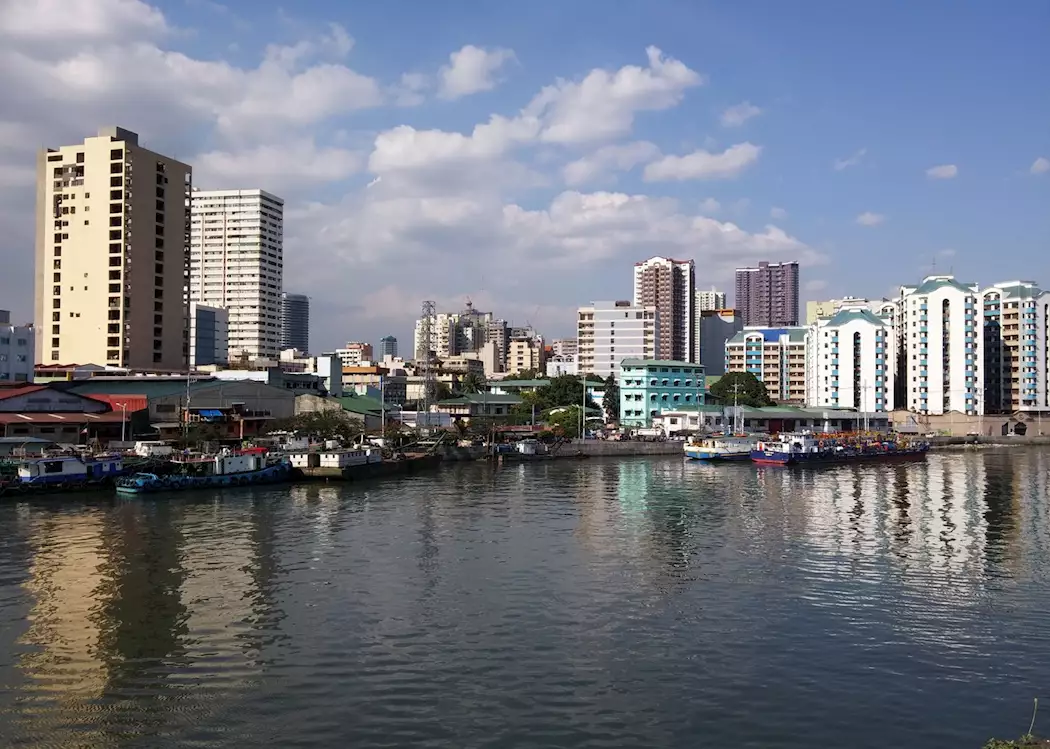
Welcome to the vibrant city of Manila, the bustling capital of the Philippines! Nestled along the eastern shore of Manila Bay, this dynamic metropolis is steeped in history, culture, and urban energy. From its historic landmarks and iconic attractions to its modern skyscrapers and bustling streets, Manila offers a fascinating blend of old-world charm and contemporary flair. Join us as we embark on a journey to uncover the rich tapestry of sights, sounds, and experiences that make Manila a truly unforgettable destination. Whether you’re exploring its historic districts, indulging in its culinary delights, or immersing yourself in its vibrant culture, Manila promises an adventure like no other. So, let’s dive in and discover all that this vibrant city has to offer!
Manila, historically significant as the capital of the Philippines, was established on June 24, 1571, under the command of Spanish conquistador Miguel López de Legazpi. This pivotal event marked the beginning of Spanish colonial rule in the Philippines, as well as the foundation of what would become one of the oldest cities in Southeast Asia. Legazpi strategically chose the site of present-day Manila due to its strategic location along the Pasig River and Manila Bay, which facilitated trade and communication with other Spanish colonies in the region.
Situated on the eastern shore of Manila Bay, Manila encompasses an area of approximately 38.55 square kilometers. Despite its relatively small size, Manila holds immense cultural, historical, and economic significance, serving as the political, educational, and commercial center of the Philippines. Over the centuries, the city has undergone significant urbanization and development, resulting in a densely populated metropolis with a vibrant mix of modern skyscrapers and historic landmarks.
With an estimated population of around 1.78 million people as of 2021, Manila ranks among the most densely populated cities globally. The city’s population density is attributed to factors such as rapid urbanization, rural-to-urban migration, and limited land availability. As a result, Manila faces various challenges related to infrastructure, housing, and resource management, necessitating sustainable urban planning strategies to accommodate its growing population while ensuring quality of life for residents.
Intramuros, the historic walled city within Manila, was constructed by the Spanish colonial authorities in the late 16th century as a defensive fortification against foreign invasions. Spanning an area of 0.67 square kilometers, Intramuros served as the political, religious, and economic center of Spanish Manila, housing government buildings, churches, and residential areas. Despite suffering extensive damage during World War II, efforts to preserve and restore Intramuros’ cultural heritage have made it a popular tourist destination and a symbol of Manila’s rich history.
The Manila Cathedral, located within the historic district of Intramuros, stands as one of the most iconic landmarks in the city. Originally built in 1571, the cathedral has undergone several reconstructions throughout its history, with the current structure dating back to 1958. Its architecture reflects a blend of Spanish colonial and Filipino Baroque styles, featuring ornate facades, grand arches, and intricate interior decorations. As a symbol of faith and resilience, the Manila Cathedral continues to serve as a center of worship and a testament to Manila’s enduring spiritual heritage.
The name “Manila” is derived from the Tagalog word “Maynila,” which, in turn, originates from the term “nilad,” referring to a white-flowered mangrove plant (Scyphiphora hydrophyllacea) that once thrived along the banks of the Pasig River. Historically, the presence of the nilad plant played a significant role in shaping Manila’s landscape and ecology, as well as its cultural identity. While the plant itself is no longer abundant in the city, its legacy lives on in the etymology of Manila’s name and its symbolic representation in local folklore and traditions.
The Pasig River, spanning approximately 25 kilometers in length, traverses the heart of Manila, serving as a vital waterway for transportation, commerce, and recreation. Historically, the Pasig River played a crucial role in shaping Manila’s development as a center of trade and commerce during the Spanish colonial period. However, rapid urbanization and industrialization have resulted in pollution and environmental degradation, posing significant challenges to the river’s ecological health and sustainability. Efforts to rehabilitate the Pasig River are ongoing, aiming to restore its natural beauty and ecological balance for future generations to enjoy.
Rizal Park, also known as Luneta Park, is one of the largest urban parks in Asia, covering an expansive area of 58 hectares. Named in honor of Philippine national hero Dr. Jose Rizal, the park serves as a symbolic site of patriotism and national identity, hosting various monuments, gardens, and recreational facilities. Rizal Park is not only a popular destination for locals and tourists but also a venue for cultural events, rallies, and commemorations, reflecting its significance as a public space for civic engagement and historical reflection in the heart of Manila.
The San Agustin Church, situated within the historic district of Intramuros, holds the distinction of being the oldest stone church in the Philippines. Constructed in 1607 by Spanish Augustinian friars, the church showcases a harmonious blend of Baroque, Renaissance, and Mexican Churrigueresque architectural styles. Designated as a UNESCO World Heritage Site, San Agustin Church stands as a testament to Manila’s rich colonial heritage and religious legacy, attracting visitors from around the world to admire its ornate facade, intricately carved wooden doors, and stunning interior adorned with centuries-old religious artworks.
Manila officially became the capital of the Philippines in 1948, succeeding Quezon City, which had served as the capital since 1948. The decision to designate Manila as the capital was influenced by its historical significance, strategic location, and existing infrastructure as the center of government, commerce, and culture. Since then, Manila has remained the political and economic hub of the Philippines, playing a pivotal role in shaping the nation’s identity, governance, and socio-economic development. Despite the decentralization of government functions in recent years, Manila continues to assert its status as the symbolic heart of the Philippines, embodying the country’s rich history, diverse culture, and dynamic urban landscape.
The Manila Ocean Park, inaugurated in 2008, boasts the largest oceanarium in the Philippines, featuring a total water volume of 3.5 million liters. Situated along the scenic Manila Bay, the park offers visitors an immersive underwater experience, showcasing a diverse array of marine life indigenous to the Philippine archipelago and other parts of the world. In addition to its oceanarium, the Manila Ocean Park also features interactive exhibits, animal shows, and educational programs aimed at raising awareness about marine conservation and biodiversity.
The Manila Hotel, an iconic landmark dating back to 1912, is renowned as one of the oldest hotels in Asia. Its opulent lobby, adorned with a magnificent Austrian crystal chandelier weighing 3.5 tons, exudes timeless elegance and grandeur. Over the years, the Manila Hotel has hosted numerous dignitaries, celebrities, and heads of state, cementing its reputation as a premier destination for luxury accommodation and world-class hospitality. With its rich history, architectural splendor, and unparalleled service, the Manila Hotel remains a symbol of prestige and sophistication in the heart of Manila.
The University of Santo Tomas (UST), founded in 1611 by the Dominican Order, holds the distinction of being the oldest existing university in Asia. Spanning an expansive campus area of 21.5 hectares in Manila, UST is renowned for its rich heritage, academic excellence, and cultural significance. As a leading educational institution in the Philippines, UST offers a wide range of undergraduate and graduate programs across various disciplines, attracting students from diverse backgrounds and nationalities. With its historic campus, esteemed faculty, and vibrant campus life, UST continues to uphold its tradition of excellence and service to society.
Ninoy Aquino International Airport (NAIA), located in Manila, is one of the busiest airports in Southeast Asia, serving over 47 million passengers in 2019. As the primary gateway to the Philippines, NAIA facilitates domestic and international air travel, connecting Manila to major cities worldwide. With four passenger terminals and extensive airside and landside facilities, NAIA plays a crucial role in supporting tourism, trade, and economic development in the Philippines. Despite facing challenges such as congestion and infrastructure limitations, NAIA remains a vital transportation hub serving the needs of millions of travelers annually.
The Malacañang Palace, situated along the banks of the Pasig River in Manila, serves as the official residence and workplace of the President of the Philippines. With a total floor area of approximately 46,000 square meters, the palace complex comprises numerous buildings, gardens, and historical artifacts reflecting its rich architectural heritage and political significance. Throughout its storied history, Malacañang Palace has witnessed key moments in Philippine history, including presidential inaugurations, state functions, and diplomatic meetings. As the seat of executive power, Malacañang Palace embodies the authority and symbolism of the Philippine presidency.
The Manila North Cemetery, established in 1904, ranks among the largest cemeteries in Metro Manila, covering an extensive area of 54 hectares. Serving as the final resting place for thousands of departed souls, the cemetery features elaborate mausoleums, tombstones, and memorial gardens that pay tribute to the deceased. As a cultural landmark and historical site, the Manila North Cemetery holds significance not only as a burial ground but also as a reflection of Filipino beliefs, traditions, and rituals surrounding death and remembrance.
The University Belt in Manila is renowned for its concentration of educational institutions, earning it the distinction of having the highest density of universities and colleges in the Philippines. Located within the districts of Sampaloc and Quiapo, the University Belt is home to prestigious universities, including the University of Santo Tomas, Far Eastern University, and University of the East, among others. With its vibrant academic community, diverse student population, and bustling campus life, the University Belt serves as a hub of learning, innovation, and intellectual exchange in Manila.
The Grand Hyatt Manila, standing at 318 meters tall with 66 floors, holds the title of Manila’s tallest building. Situated within the upscale Bonifacio Global City (BGC) district, the Grand Hyatt Manila offers luxurious accommodations, world-class amenities, and panoramic views of the city skyline and Manila Bay. Its sleek, modern design and state-of-the-art facilities cater to discerning travelers and business executives seeking unparalleled comfort and convenience in the heart of Manila’s dynamic urban landscape.
The Pasig River Ferry Service, inaugurated in 2007, provides commuters with an alternative mode of transportation along the Pasig River, spanning a total route of 27 kilometers. Operating a fleet of passenger ferries, the service offers a convenient and scenic way to navigate Manila’s congested roadways while reducing traffic congestion and carbon emissions. With multiple ferry terminals strategically located along the riverbanks, the Pasig River Ferry Service serves as a vital link in Manila’s public transportation network, providing commuters with efficient, affordable, and environmentally friendly travel options.
The Manila Film Center, constructed in 1982 as a venue for the Manila International Film Festival, holds the unfortunate distinction of being the site of one of the most tragic construction accidents in Philippine history. During the building’s construction, a scaffolding collapse resulted in the entrapment and death of an estimated 168 workers, whose bodies were reportedly buried within the structure. Despite the tragedy, the Manila Film Center continues to stand as a cultural landmark and events venue, hosting various performances, concerts, and exhibitions over the years.
Manila hosted the 1954 Asian Games, marking the first time the event was held in the Philippines. The games featured 970 athletes from 19 countries competing in 76 events across various sports disciplines. As the host city, Manila showcased its hospitality, organizational capabilities, and sporting infrastructure, leaving a lasting legacy in the history of the Asian Games movement.
The Manila Bay Sunset Cruise offers tourists a captivating view of the world-famous Manila Bay sunset, with the sun setting over the horizon at approximately 5:30 to 6:30 PM, depending on the season. This leisurely cruise allows passengers to witness the stunning natural spectacle while enjoying onboard amenities such as dining, entertainment, and sightseeing. As one of Manila’s most popular tourist attractions, the Manila Bay Sunset Cruise provides a memorable experience of the city’s picturesque waterfront and skyline.
The Metropolitan Theater, an architectural masterpiece completed in 1931, boasts a seating capacity of 1,670 and features a stunning Art Deco design. Located in the heart of Manila, the theater served as a cultural hub for performing arts, music, and entertainment during its heyday. Despite years of neglect and deterioration, efforts to restore the Metropolitan Theater are underway, aiming to revitalize its historic charm and cultural significance for future generations to enjoy.
The Manila Central Post Office, an iconic landmark completed in 1926, serves as the main postal hub in the Philippines. Known for its neoclassical architecture and iconic dome measuring 52 meters in diameter, the post office building stands as a symbol of Manila’s rich architectural heritage and postal history. With its grand facades, intricate details, and bustling activity, the Manila Central Post Office continues to play a vital role in facilitating mail and courier services for residents and businesses in Manila and beyond.
The Manila Electric Company (Meralco) is the largest electric distribution utility company in the Philippines, serving over 7.1 million customers in Metro Manila and nearby provinces. Established in 1903, Meralco plays a crucial role in providing reliable electricity supply to homes, businesses, and industries, driving economic growth and development in the region. With its extensive network infrastructure, innovative technologies, and commitment to sustainability, Meralco remains at the forefront of powering progress and prosperity in Manila and the surrounding areas.









